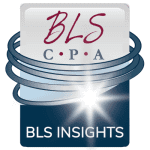 There are more than 25 types of tax-exempt organizations classified under 501(c) of the Internal Revenue Code. Additionally, there is a wide breadth of types of nonprofit organizations within section 501(c)3 that include organizations operated for religious, charitable, scientific, literary, or educational purposes. Despite the many shapes and sizes of nonprofit organizations, accounting principles that govern how nonprofit organizations report their activity in financial statements are relatively uniform. However, there is one type of nonprofit organization that, in the eyes of the charity evaluators, is under a microscope and requires additional attention.
There are more than 25 types of tax-exempt organizations classified under 501(c) of the Internal Revenue Code. Additionally, there is a wide breadth of types of nonprofit organizations within section 501(c)3 that include organizations operated for religious, charitable, scientific, literary, or educational purposes. Despite the many shapes and sizes of nonprofit organizations, accounting principles that govern how nonprofit organizations report their activity in financial statements are relatively uniform. However, there is one type of nonprofit organization that, in the eyes of the charity evaluators, is under a microscope and requires additional attention.
A Voluntary Health and Welfare Organization (VHWO) is formed for the purpose of performing voluntary services for various segments of society and that is tax-exempt (organized for the benefit of the public), supported by the public, and operated on a not-for-profit basis. Most voluntary health and welfare entities concentrate their efforts and expend their resources in an attempt to solve health and welfare problems of our society and, in many cases, those of specific individuals. As a group, voluntary health and welfare entities include those NFPs that derive their revenue primarily from voluntary contributions from the general public to be used for general or specific purposes connected with health, welfare, or community services. The general public excludes governmental entities when determining whether an NFP is a voluntary health and welfare entity.
Under current accounting standards, only VHWOs are required to present a statement of functional expenses as a basic financial statement in a matrix format that reports expenses by both functions (e.g., program, M&G, fundraising) and their natural classification (e.g., salaries, occupancy, supplies, etc.). This higher standard of reporting for VHWO’s results from their reliance on voluntary contributions from the general public. The information provided in a statement of functional expenses allows a donor to evaluate a charity’s efficiency and effectiveness in utilizing their donations to achieve results.
If you believe this information should be available for all nonprofit organizations to improve informed giving industry-wide, have no fear. With the release of FASB ASU 2016-14, Non-for-Profit Entities, all NFP’s will soon be required to provide a statement of functional expenses. This standard is effective for annual financial statements issued for fiscal years beginning after December 15, 2017.
Photo by DLG Images (License)
